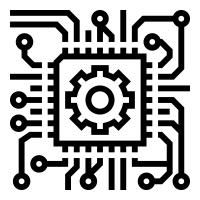What is Veterinary Technologists and Technicians ?
Perform medical tests in a laboratory environment for use in the treatment and diagnosis of diseases in animals. Prepare vaccines and serums for prevention of diseases. Prepare tissue samples, take blood samples, and execute laboratory tests, such as urinalysis and blood counts. Clean and sterilize instruments and materials and maintain equipment and machines. May assist a veterinarian during surgery.
Minimum education level
PT3
SPM
STPM
Diploma
Degree
Average Salary
Example of a Job Position
Task
Knowledge
Mathematics
Knowledge of arithmetic, algebra, geometry, calculus, statistics, and their applications.
English
Knowledge of the structure and content of English, including the meaning and spelling of each word, composition rules, and grammar.
Engineering and Technology
Knowledge of practical applications in engineering and technology. This includes the application of principles, techniques, procedures and equipment for designing and producing various goods and services.
Biology
Knowledge of plant and animal organisms, their tissues, cells, function, interdependence, and their interactions with the environment and each other.
Chemistry
Knowledge of the composition, structure and chemical properties of substances and chemical processes and transformations that occur. Includes the use of chemicals and their interactions, alarms, production techniques and disposal methods
Skills
Active Listening
Give full attention to the words of others, set aside time to understand the points presented, ask questions appropriately, and not interrupt at the wrong time
Monitor
Monitor / assess the performance of themselves, other individuals, and organizations to develop or take corrective actions.
Talking
Talk to others to convey information effectively
Critical Thinking
Using logic and reasoning to identify the strengths and weaknesses of alternative solutions, conclusions, or approaches to the problems handled
Reading Understanding
Understand sentences and paragraphs written in work documents.
Coordination
Adjust the actions taken, with the actions of others.
Equipment Maintenance
Perform routine equipment maintenance and determine when and what kind of treatment is needed.
Capability
-
1
Information Arrangement - The ability to arrange various things and actions in a certain sequence or pattern according to the rules specified (for example: number patterns, letters, words, pictures, mathematical operations).
-
2
Oral Expression - The ability to communicate information and ideas when speaking, so that others can understand what is being conveyed
-
3
Oral Understanding - The ability to listen and understand information and ideas conveyed through words and oral sentences
-
4
Problem Sensitivity - The ability to tell when something is wrong or maybe wrong. This does not involve solving the problem, only knowing if there is a problem.






